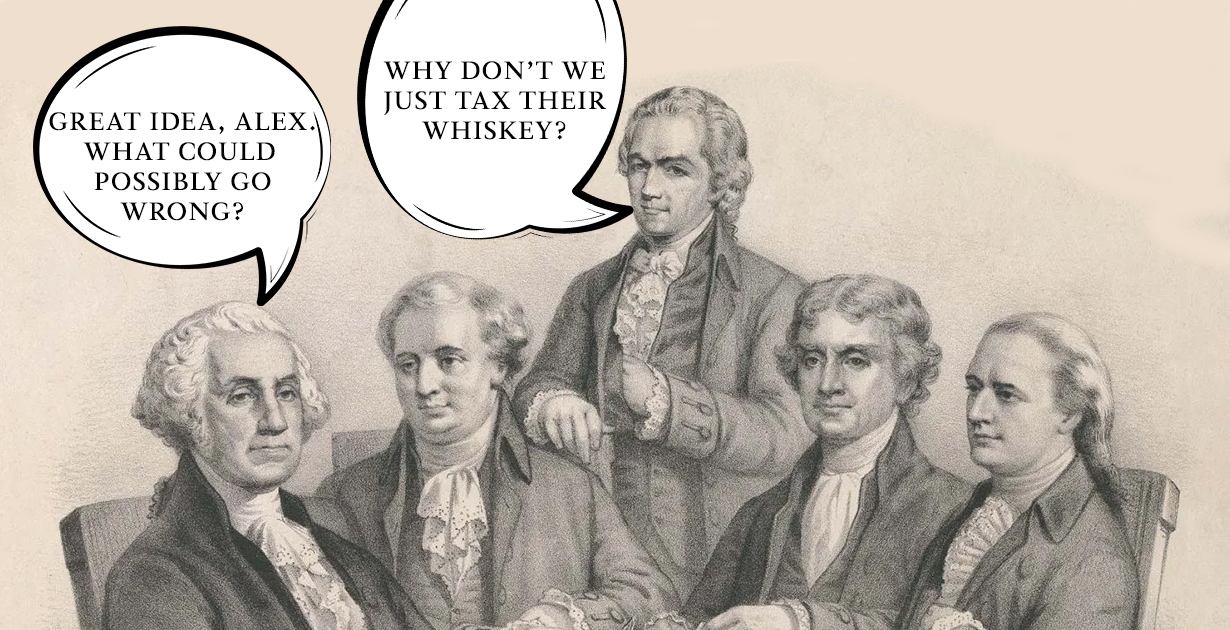The exciseman is a typically vilified person in the annals of Scottish history. In the 1700s, distillers in Scotland found themselves suddenly subjected to taxes on their beloved whisky. Some distillers, like those in Speyside, were protected by the region’s geography. Other distillers, like those in the Lowlands, were forced to pack up their stills and move their illicit operations to evade the excisemen.
Robert Burns, Scotland’s national bard, was himself an exciseman for a time. And yet, he held a clear disdain for the profession. Cartoons at the time were printed in newspapers depicting excisemen as devils; their presence clearly unwelcome. Violence against excisemen was not uncommon, and neither were fatalities. The same was true across the Atlantic.
However hated the excisemen were in Scotland, in the newly-formed United States of America, the intense animosity towards excisemen and a particular founding father named Alexander Hamilton, had significantly higher stakes. During The Whiskey Rebellion of the 1790s, resistance to whiskey taxes almost caused an all-out revolutionary war.
So what was the Whiskey Rebellion? And how did the whiskey tax put such a strain on the United States?
The Whiskey Tax
In 1791, the fledgling United States was in huge amounts of debt, owing to the Revolutionary War against the British that raged from 1775-1783. Alexander Hamilton was Treasury Secretary, and therefore responsible for devising a way to pay back the nation’s debts. Amongst a bevy of new taxes that he wished to impose, he created the whiskey tax.
Whiskey was plentiful in the United States at this time, with Irish and Scottish immigrants bringing with them their distilling habits. By the late 1700s, almost every household in Western Pennsylvania had its own still.
Hamilton felt confident in imposing the new tax, projecting that it would bring in around $800,000 annually for the government. After all, whiskey was a luxury, not a necessity.
Whilst this may have been the thinking in the capital, Philadelphia, on the Western Frontier it was a very different story.
The Western Frontier’s Opposition To The Whiskey Tax
On the northern side of the Appalachian mountains, cut off from the capital, the population of the Western Frontier was poor. As a result, the area had a barter economy, and the most traded asset in return for goods and services was whiskey.
Rather than hauling leftover grain to the capital to sell, citizens distilled this surplus grain into whiskey, which they could then trade amongst themselves.
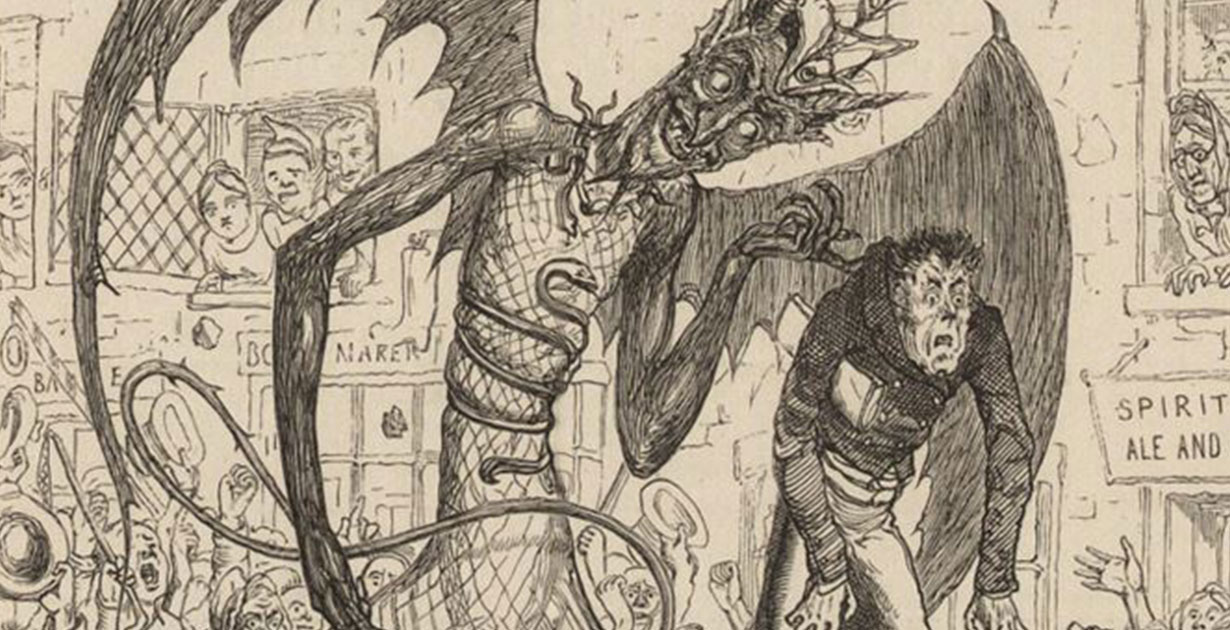
Hamilton’s new tax had numerous other problems. One such problem was that it had to be paid in cash, which, as mentioned above, was not exactly plentiful in the area. Every still in the state also had to be registered and taxed. And finally, the tax unfairly targeted small producers, with large manufacturers being subjected to the smallest taxes and families distilling in their homes being left to suffer.
Congress was not representative of those living on the frontier, who felt that they were being unfairly taxed. In recent history, Americans had formulated a response to those who imposed taxation without representation. And so, the citizens of the Western Frontier knew what must be done: revolution.
The Whiskey Boys
Resistance to the tax began quietly: refusal to pay and unregistered stills. As such, the government in Philadelphia sent tax collectors to the Western Frontier to enforce the new laws. In response, rebels began to organise and plan ways to obstruct the tax collectors. They called themselves The Whiskey Boys.
The Whiskey Boys began their whiskey rebellion by writing to families in Western Pennsylvania explaining how they should evade the tax. Also in this correspondence was a thinly veiled warning that those who either conformed or did not obstruct the tax collectors would be treated as collaborators. In the ensuing months, those who registered their stills would often find them destroyed the next day.
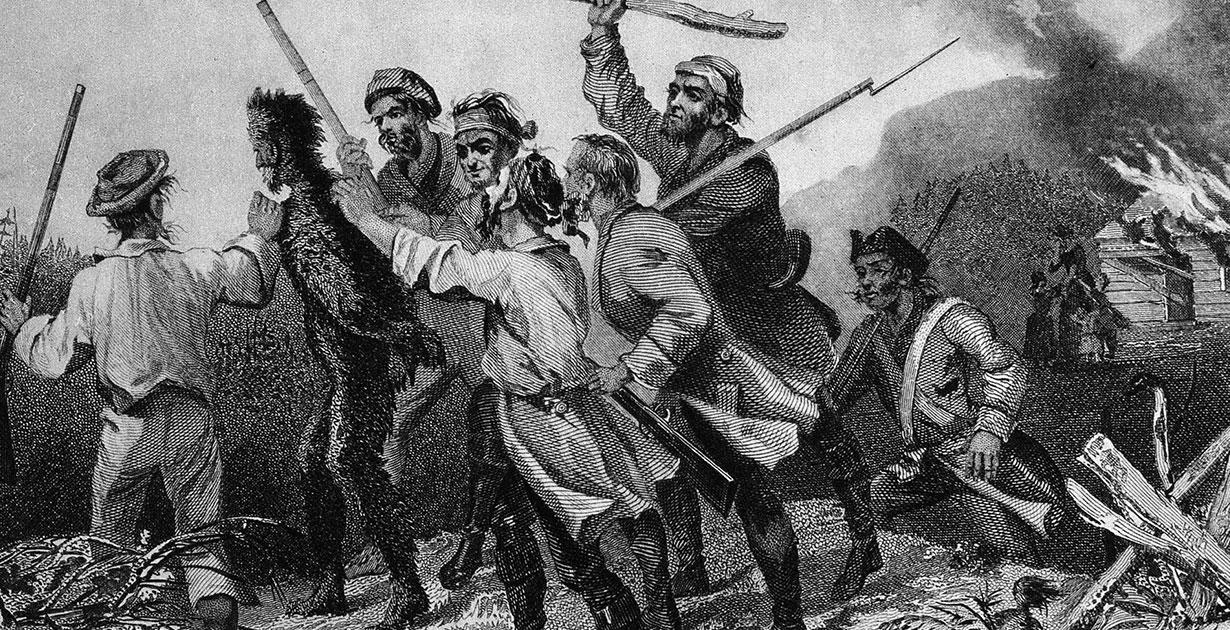
Washington & Hamilton’s Response
Alexander Hamilton, furious at the resistance to his new tax, wanted to fight violence with violence, sending government soldiers to the frontier. Washington, however, was hesitant, preferring to instead send negotiators to the rebels. When this was met with a refusal, Washington issued a Presidential proclamation, ordering the rebels to cease their actions. Of course, the rebels did not comply.
Escalating Tensions
With no concessions from the capital or the rebels, violence escalated again in 1793, with the burning of revenue officers’ homes as well as those of collaborators.
In a bid to push the rebellion forward and politicise their movement, citizens called their own assembly to act in place of Congress. In this assembly, there was talk of allying with the French, who were amid the Reign of Terror, following the establishment of the First Republic. Alliance with the revolutionary French would almost certainly turn the conflict into an all-out war.
Around this time, there was an amendment to the law, allowing those who refused to pay the tax to be tried locally, rather than being transported to Philadelphia. This was something of an appeasement to the rebels, who knew that local courts would be more sympathetic to their cause.
However, amongst some tax collectors, this caused anger. One such tax collector wanted to issue as many writs as possible before this change came into effect, essentially dealing maximum damage to the rebels. His name was John Neville.
The Battle of Bower Hill
John Neville, a Revolutionary War veteran, landowner, and tax collector travelled to the home of a distiller to serve a writ. There, he was met with an angry mob of rebels, one of whom shot a musket into the air and scared the revenue officers away.
Neville, however, was not deterred. He delivered the rest of his writs and returned home to his estate at Bower Hill where he armed his slaves, anticipating violence. The next morning, a crowd of rebels marched to Neville’s home. In response, Neville grabbed a gun and shot one of the rebels dead. This constituted a significant escalation; a government officer had killed a civilian. The rebels wanted revenge.
A mob of 500 men converged on Neville’s property the next day. Neville promptly fled, leaving a very small number of state militia that had come to his aid to handle the situation. Following an hour of gunfight, smashing windows, and the torching of Neville’s property, only one person was dead – the leader of the rebel mob. With two of their men dead, the rebels were even more incensed, and it seemed ever more likely that another revolutionary war would break out in the United States.
The March on Pittsburgh
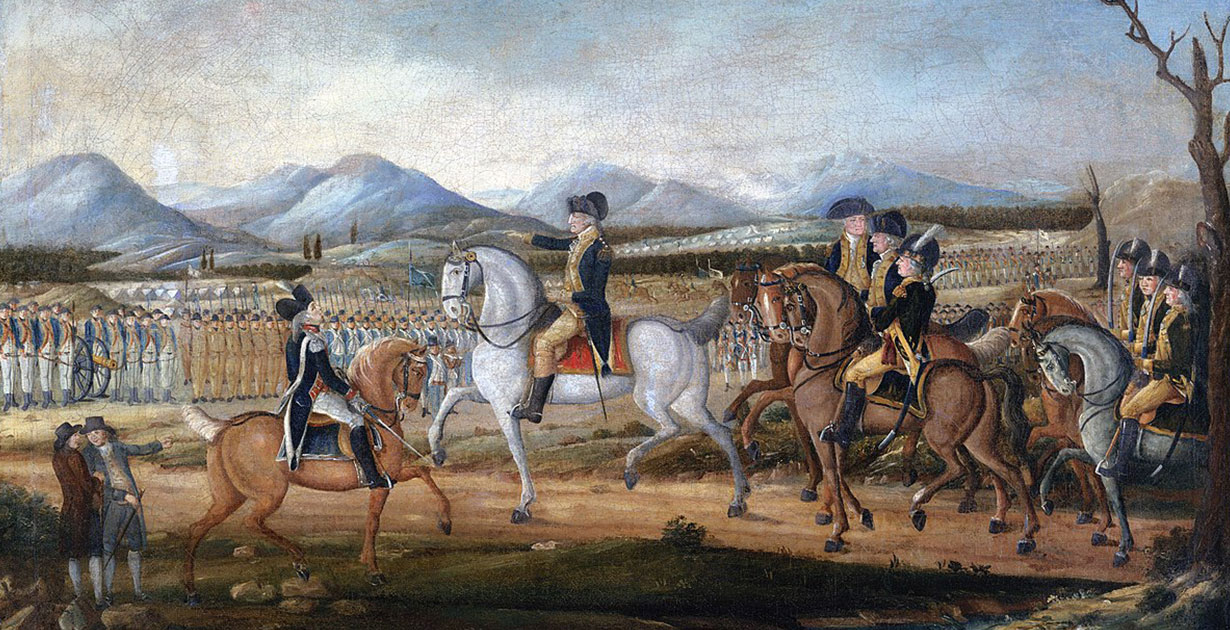
Following the Battle of Bower Hill, 7,000 whiskey rebels gathered outside of Pittsburgh, ready to torch the city if need be. Panicked government officials sent six barrels of whiskey to the rebels, as a sort of peace offering. The rebels took the whiskey and got drunk, then became angrier than ever. War was on the horizon.
Finally, George Washington awoke to the growing chaos and went to the Supreme Court for permission to intervene. The Supreme Court ruled that military intervention was needed to quell the rebellion, and Washington invoked the Militia Act of 1792. By September 1794, 13,000 government soldiers were at arms, ready to be led into battle by George Washington. Washington and Hamilton travelled to Pittsburgh, ready for battle.
In Pittsburgh, however, ringleaders of the rebellion had received word of the huge military force headed their way. In the face of real war, morale collapsed. By the time Washington and Hamilton arrived in Pittsburgh, they found a small and dejected force who readily surrendered. No war erupted. The Whiskey Rebellion was over.
Hamilton’s Occupation
With the threat of war dissipated Washington returned to Philadelphia, leaving Hamilton to occupy the region along with government soldiers to ensure order. Hamilton, however, was not content to simply sit back and allow the rebels to go unpunished. He was furious and humiliated that the whiskey rebels had questioned his tax. And so, Hamilton ordered a swathe of arrests; around 150 men and boys were taken in the night.
The local communities were outraged and, as a sign of rebellion and hatred, they began hanging Hamilton’s portrait upside down. Some distilleries in America still do this today, as a sign of solidarity with their distilling ancestors.
The arrested rebels were dragged through the streets of Philadelphia to face trial. However, despite Hamilton’s obvious attempt to assert dominance, there was not enough evidence to convict the majority. In the end, only two men were convicted and sentenced to death for their part in the rebellion. Their sentences, however, were never carried out. The two men received Presidential pardons in November 1795 and were freed, with Washington deciding that executions would not serve the nation, nor his conscience.
The End of the Whiskey Tax
Over the next seven years, the whiskey tax, although written into law, remained hard to collect and still opposed by the majority of the population. Finally, in 1802, the new President Thomas Jefferson accepted defeat on Hamilton’s behalf, and the tax was repealed.
“The whiskey tax is very unpopular, But necessary, sir”
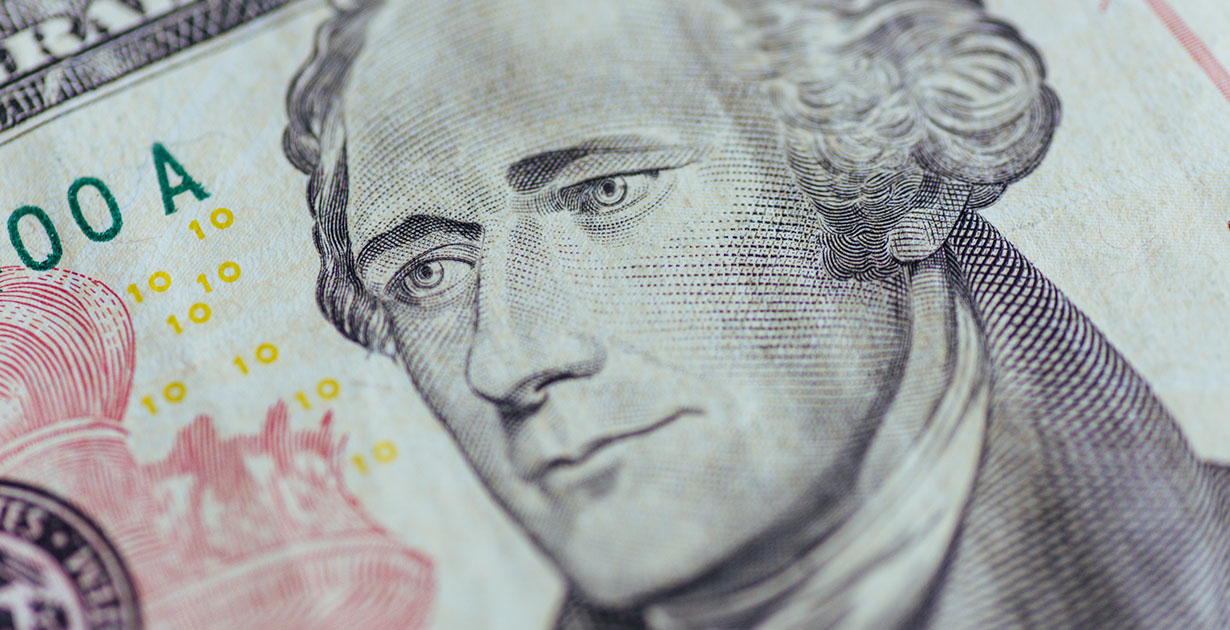
Despite Alexander Hamilton’s reverence in history, his insistence on the necessity of the whiskey tax made him an extremely unpopular figure amongst the distillers of the Western Frontier.
The disdain for excisemen and revenue officers on both sides of the Atlantic is apparent. Scottish distillers went to extreme lengths to avoid the taxes imposed on them in the 1700s. However, the imposition of taxes on the newly-born United States, where citizens had just been liberated from the British, proved to be too much of an insult.
This is an area of American history that has almost been lost to the sands of time. The war that never happened. The rebellion that failed. In reality, however, Hamilton introduced a tax that was so unpopular it almost divided the new nation in two. And what a legacy to contend with.

